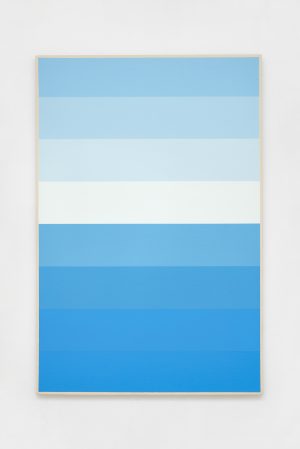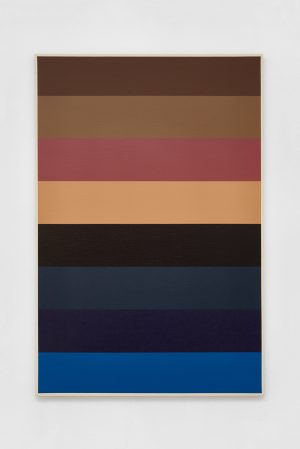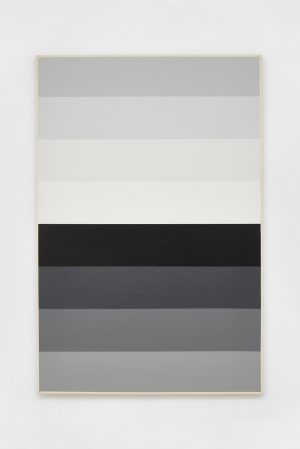
Ádám Miklós VARGA
CMYK - C
- Year(s)
- 2019
- Technique
- acrylic on canvas
- Size
- 120x80 cm
Artist's introduction
Ádám Varga is one of the key figures of the young generation of painters entering the scene around 2020. As an experimental artist who thinks in terms of series of projects, he seeks new paths of post-conceptualism and reduced abstraction in a present defined by manufacturing and digitality. Ádám Varga, born in Budapest – after a detour with a scholarship in Riga and an internship in Leipzig – graduated from the University of Fine Arts in 2019, majoring in painting. Evoking the aesthetics of mechanical precision, yet executed in his own studio, his panel paintings refresh the 20th century tradition of monochrome painting and minimalism. As a digital native, he takes nostalgic motifs from decades of computer graphics, and as a deft craftsman, he hacks production lines. In his various series, he has explored topics such as the perfect hand-painted copy, the multiplied program image, the visualisation of pixelated game coins or the transformation of the mimeograph into a graphic cutting machine. His large-scale CMYK cycle, executed in 2019, is a witty, painterly reinterpretation of colour coding – used in image editing software and the printing industry. The series consists of fifteen canvases, each composed of eight homogeneously painted bars of colour. Varga used the four-colour printing (CMYK) code system as a painterly "tool”, which – by ensuring precisely calibrated colour accuracy – is responsible for communication between graphic software and digital printing. He mixed the machine tones of blue, magenta, yellow and black layers in his studio, individually in images and in combination with each other in all their possible variations. Through the mechanical gesture of painting, the artist himself became an "automaton", but the end result was a unique series of abstract works of art, which also allow brushstrokes to be seen. Through a minimalist yet heroic painterly gesture, the CMYK series seeks a place for art in the great machinery of capitalist society. Despite his young age, Varga has already won several prestigious awards (such as the Derkovits Prize), participated in numerous exhibitions, and is also active as an organizer, including the artist-run, independent exhibition space in Budapest called PINCE. He lives and works in Budapest. Gábor Rieder
More artworks in the artist's collection »














